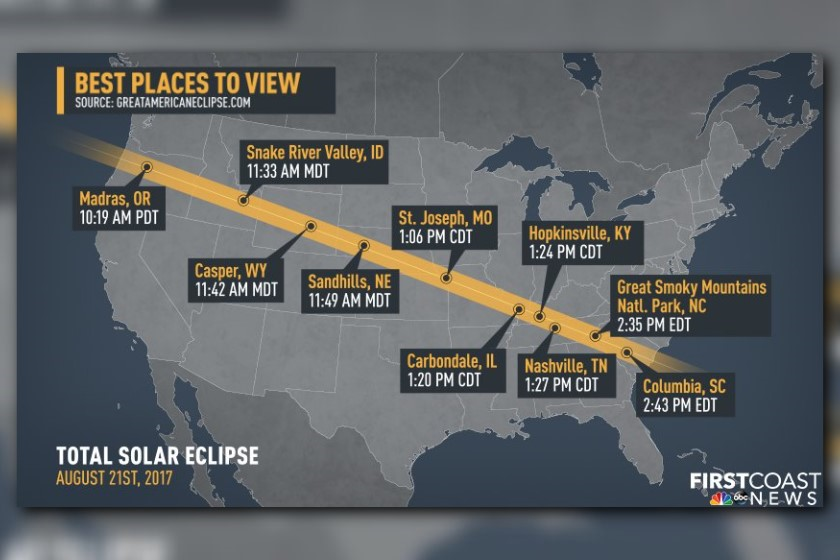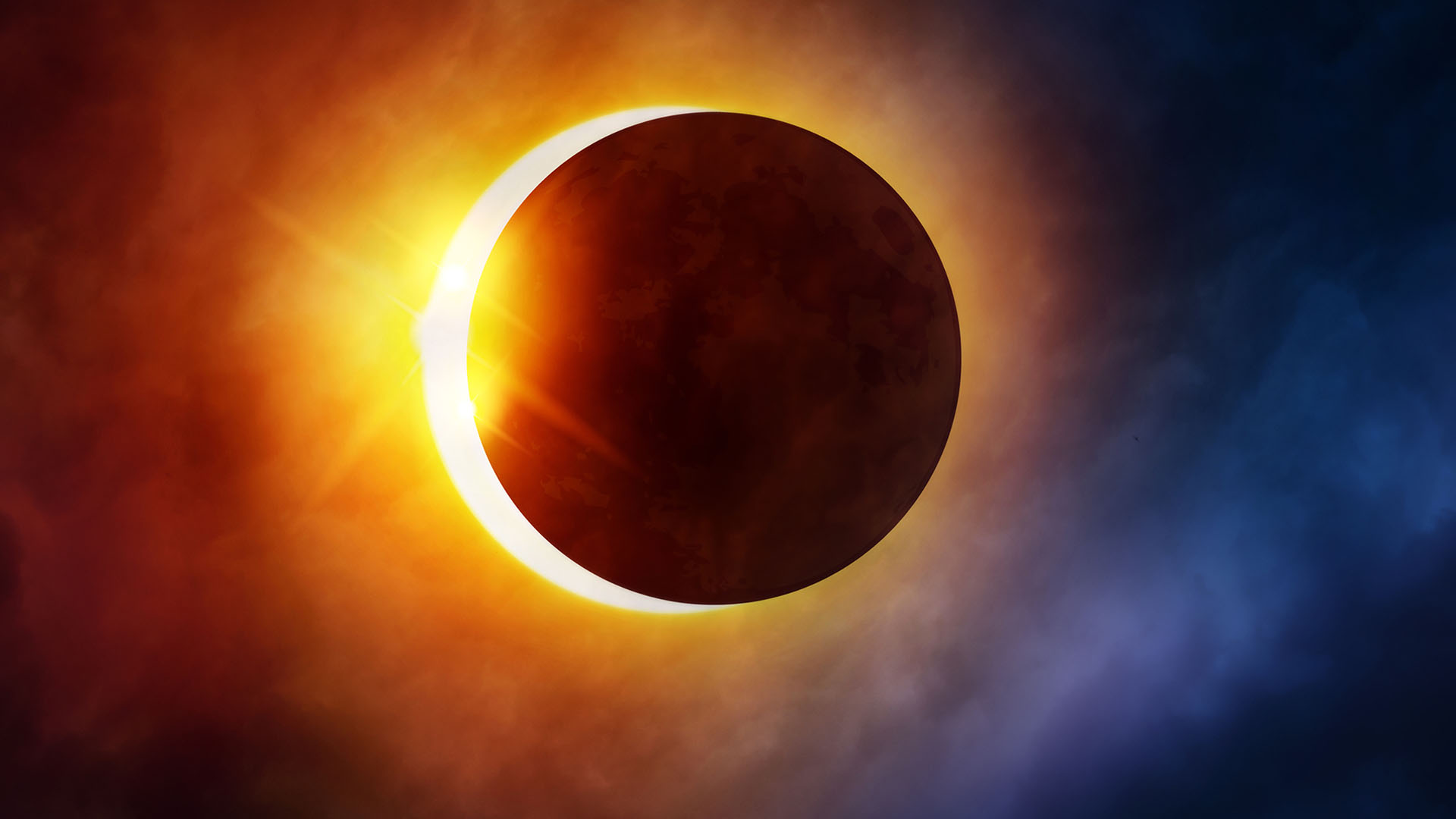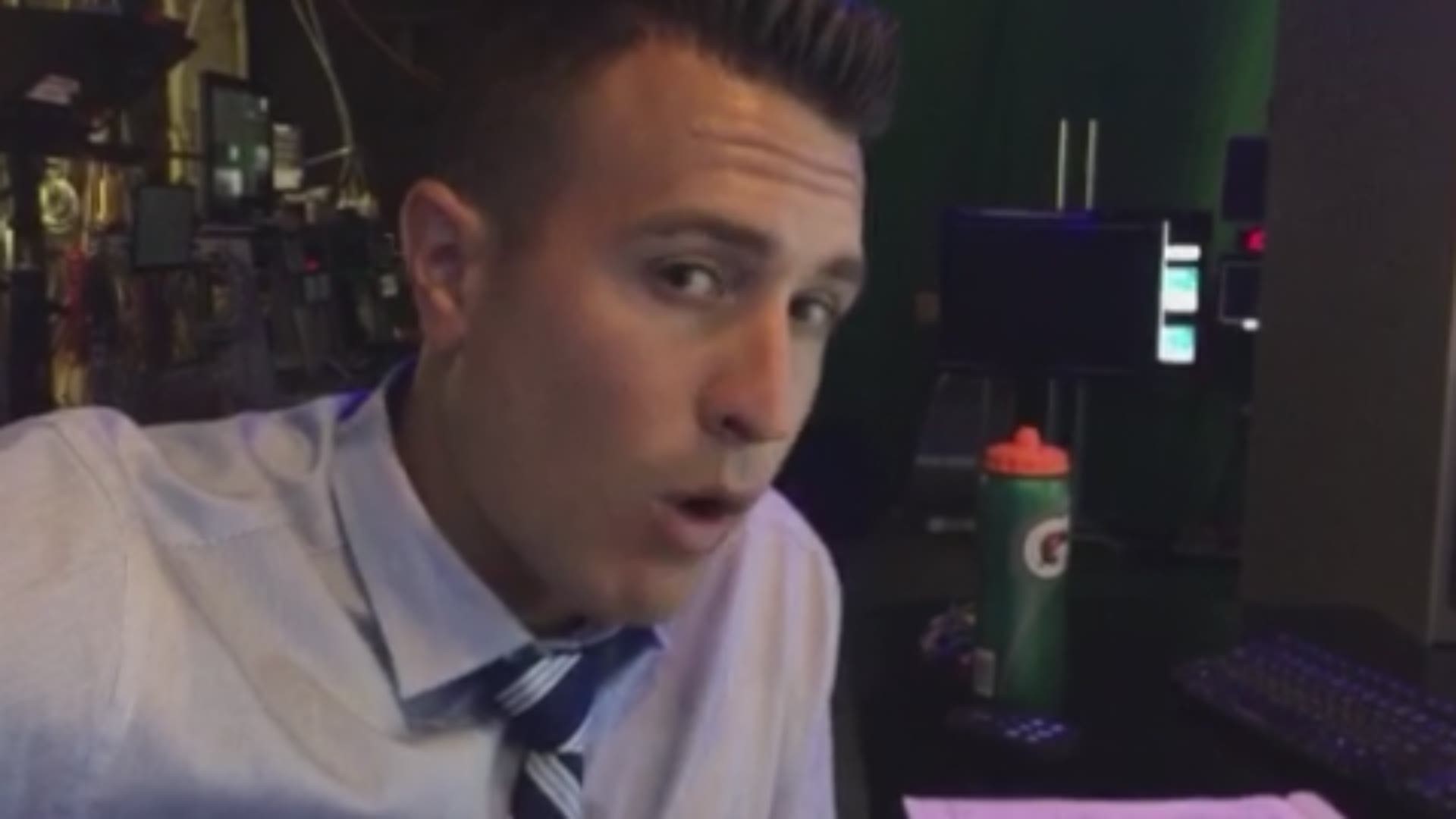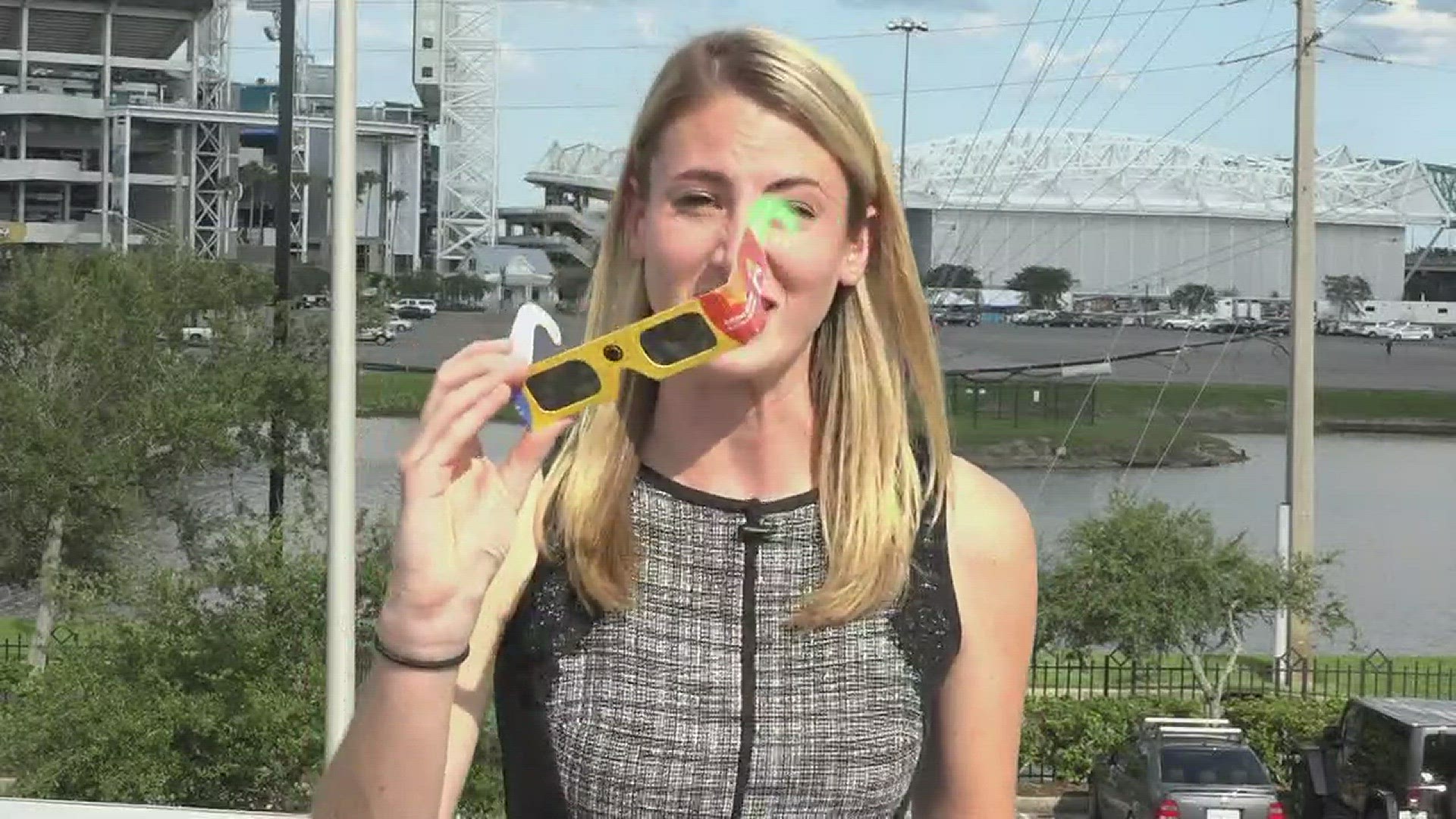You might have heard there’s going to be this thing called a ‘solar eclipse’ happening on August 21.
That’s a joke. It’s the buzz everywhere – and this is your guide to everything you need to know about the Great American Eclipse of 2017.
Let’s start with the name: Great American Eclipse.
So, why is it called that?
It will be the first solar eclipse with a path of totality viewable from the U.S. and only the U.S. since 1979. There was one in 1970 that was viewable from Florida and one in 1991 viewable from Hawaii but this unique experience will span across 14 states.
And though the path of totality (points where the sun will be 100 percent eclipsed by the moon) isn’t in Florida or Georgia, a 90 percent view will still be something you don’t want to miss. According to the National Weather Service, an eclipse like this won't happen again until 2045.

So, how do you view it?
Well, don’t stare into the sun because you will burn your retinas out. That’s not a joke your parents told you like ‘if you keep making that face it’ll stick that way.’ You could really do serious damage to your eyes, if you’re lucky enough not to totally blind yourself, by staring into the sun.
NASA has approved four different brands of glasses that are rated for turning your peepers to the sun. Check out NASA's safety recommendations for glasses here.
If you have not gotten your solar eclipse glasses through an online retailer, it's too late. However, locally there are viewing parties that are offering eclipse glasses and viewing tools!
Another way you can view the eclipse without staring at the sun is by making a shoe box viewer. It’s old school but it a fun project for kids to make.
So, how do you photograph it?
Not all of us have a fancy camera rig and though this celestial event is going to be amazing, there is no reason to go out of your way to purchase anything fancy.
But, like your eyeballs, your camera’s eye can be damaged by long term direct sun exposure, and you likely won’t get very good photos by just pointing it up and hoping for the best.
There are filters you can buy to make photographing the sun look as artsy as you picture it in your head. #Nofilterneeded, well at least on Instagram, but make sure the polarizing filter is pretty dark so you can see the sun as it heads in and out of shadow.
But if you do have a DSLR camera, you can also get a set of polarizing filters like these to make photographing the eclipse a breeze.
And finally here is a list of all the events locally you can attend to view the eclipse! Happy star gazing!

So, what's the weather going to be like locally? Meteorologist Steve Fundaro has a look at the weather for you.



